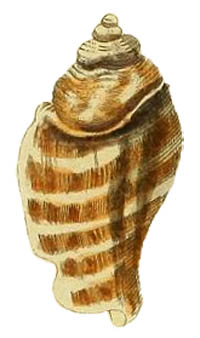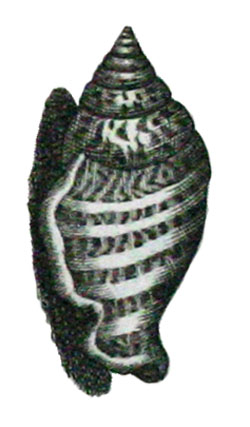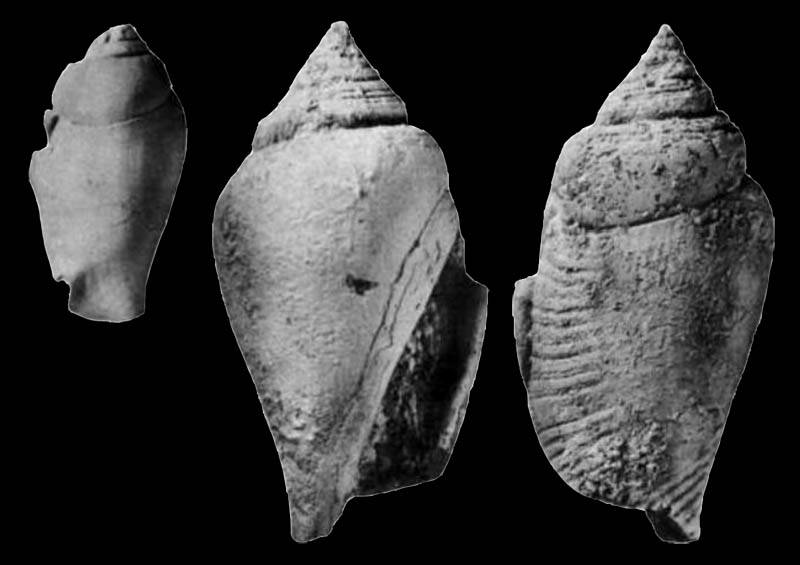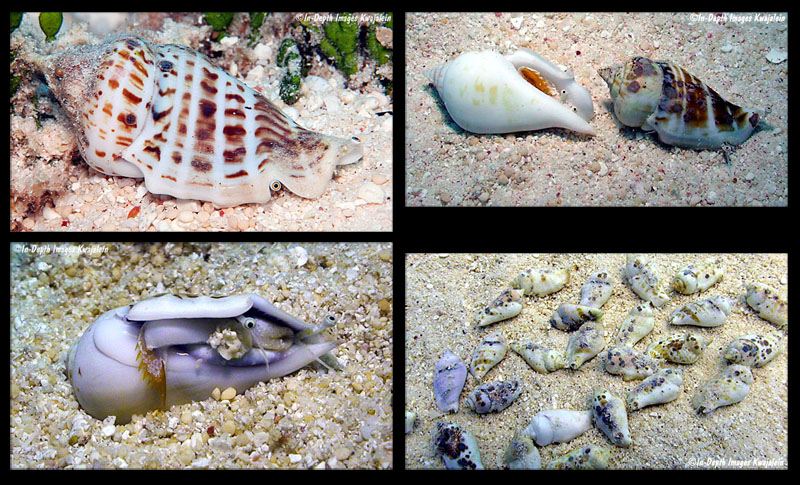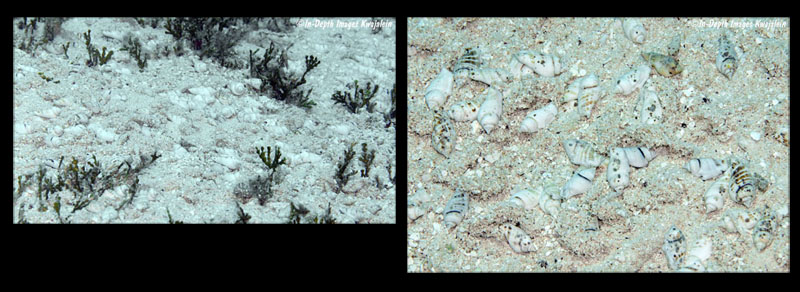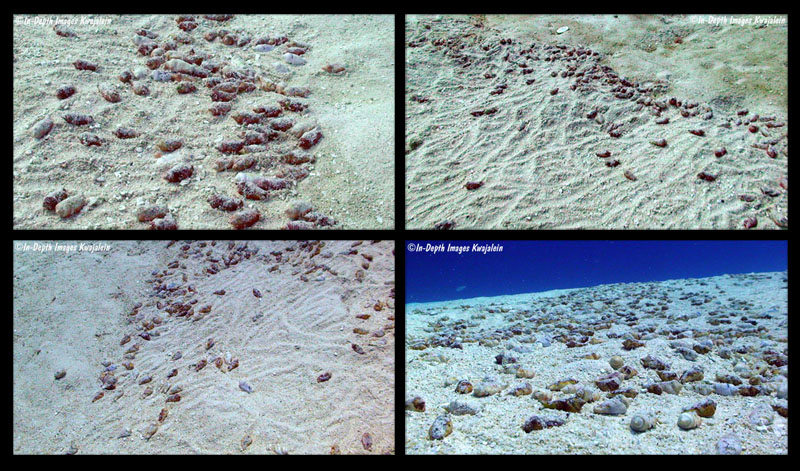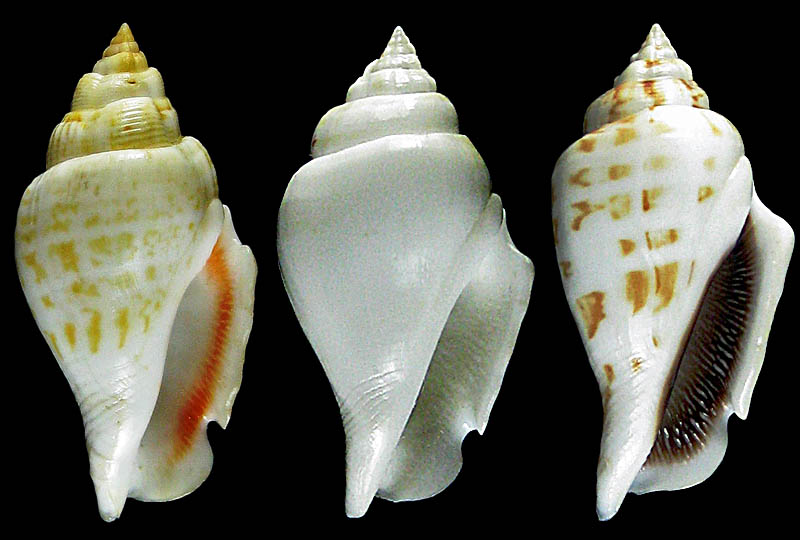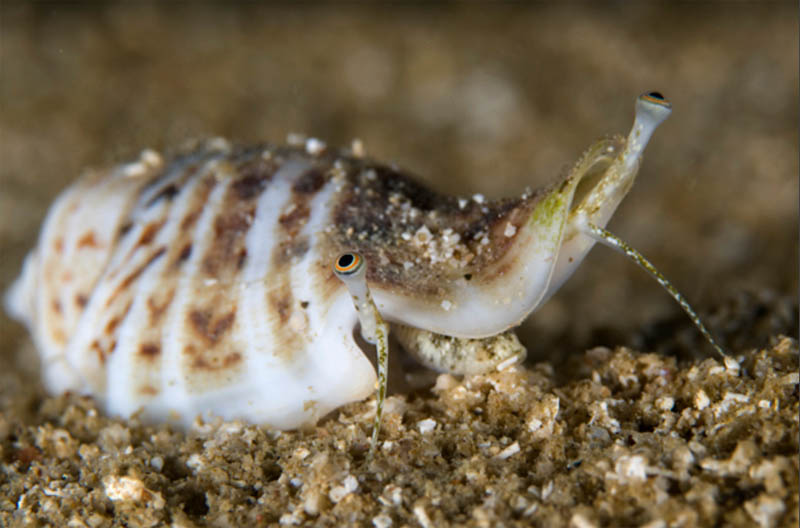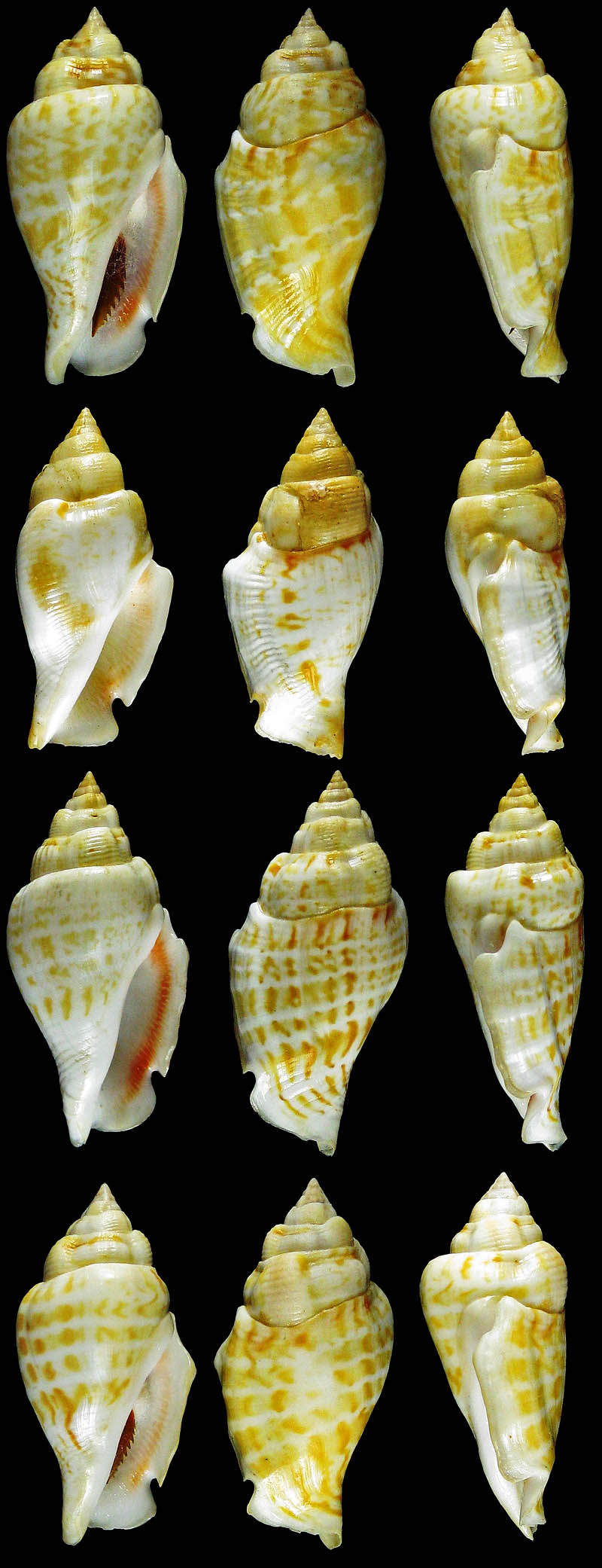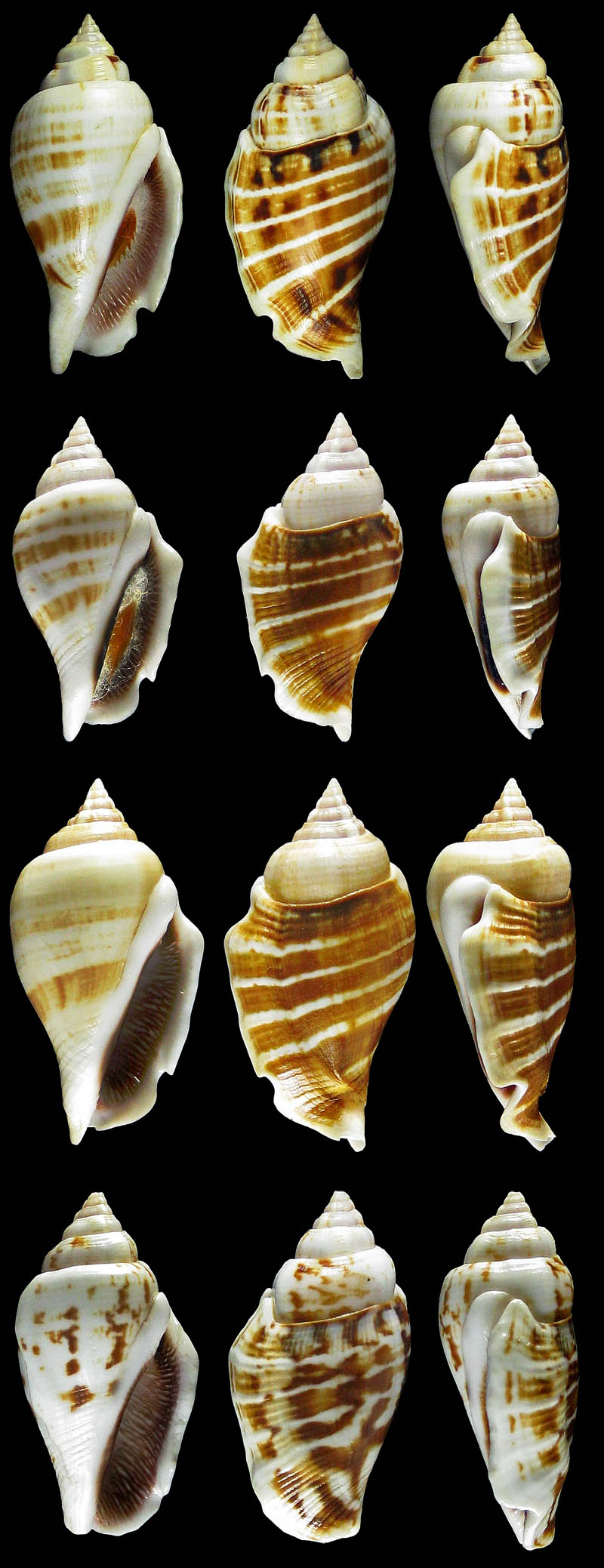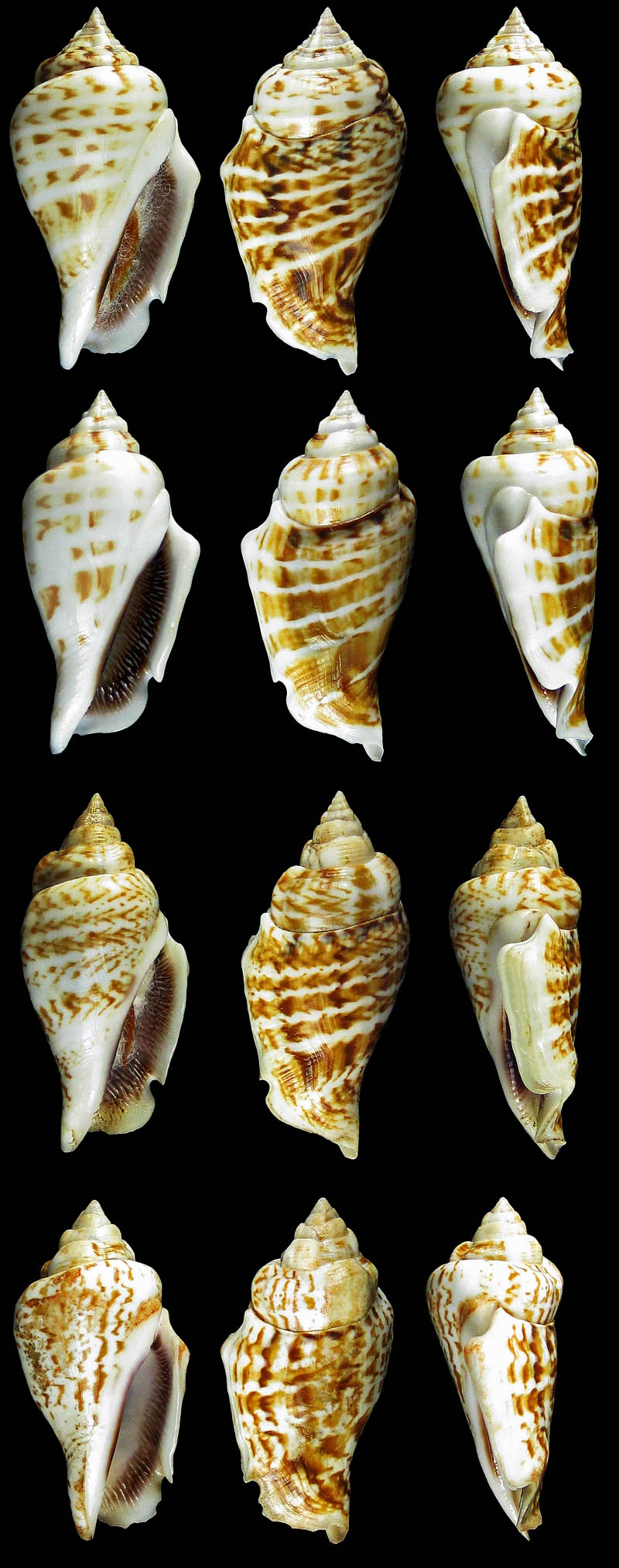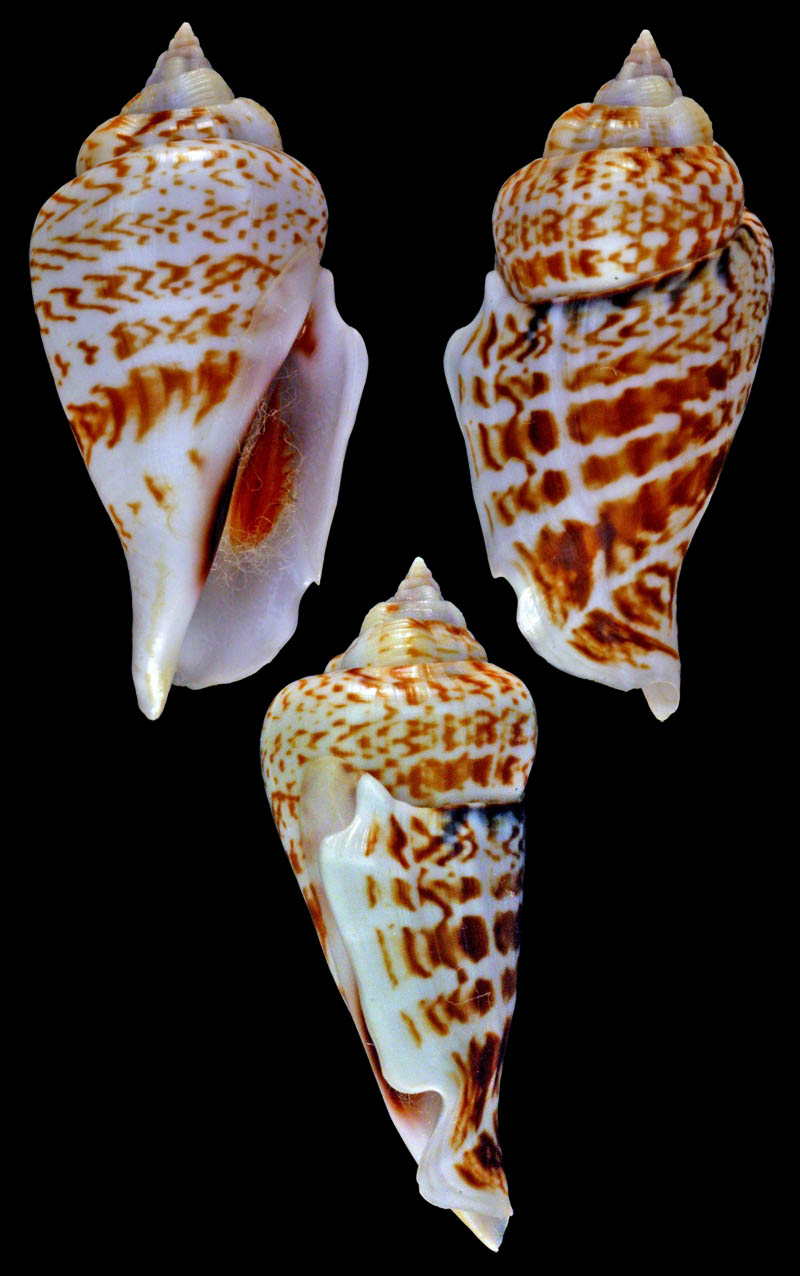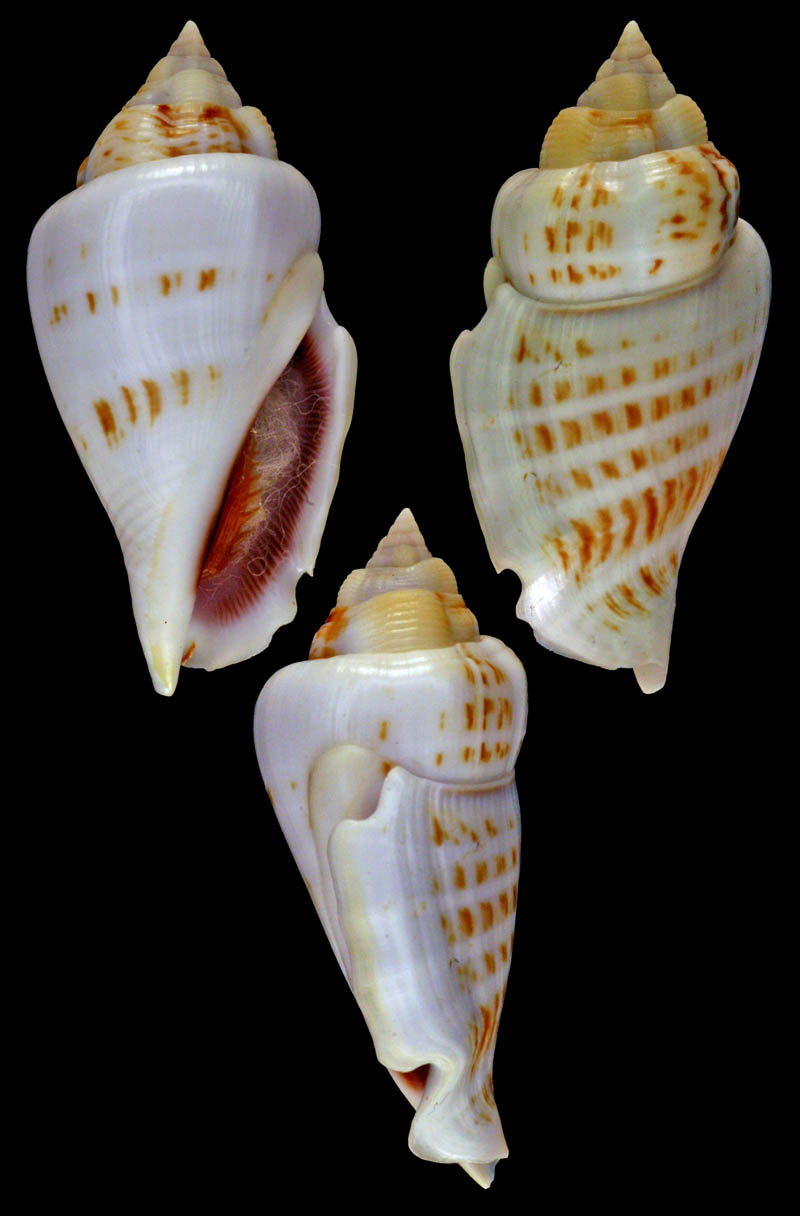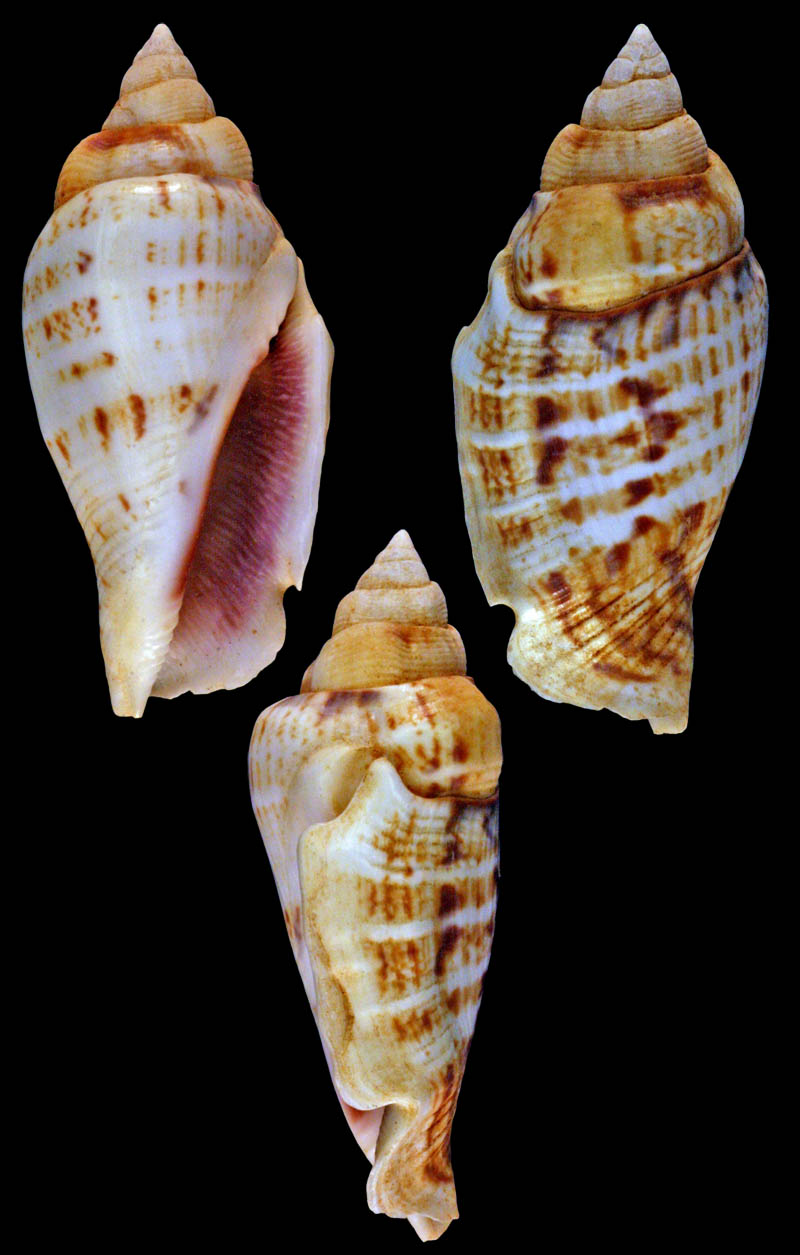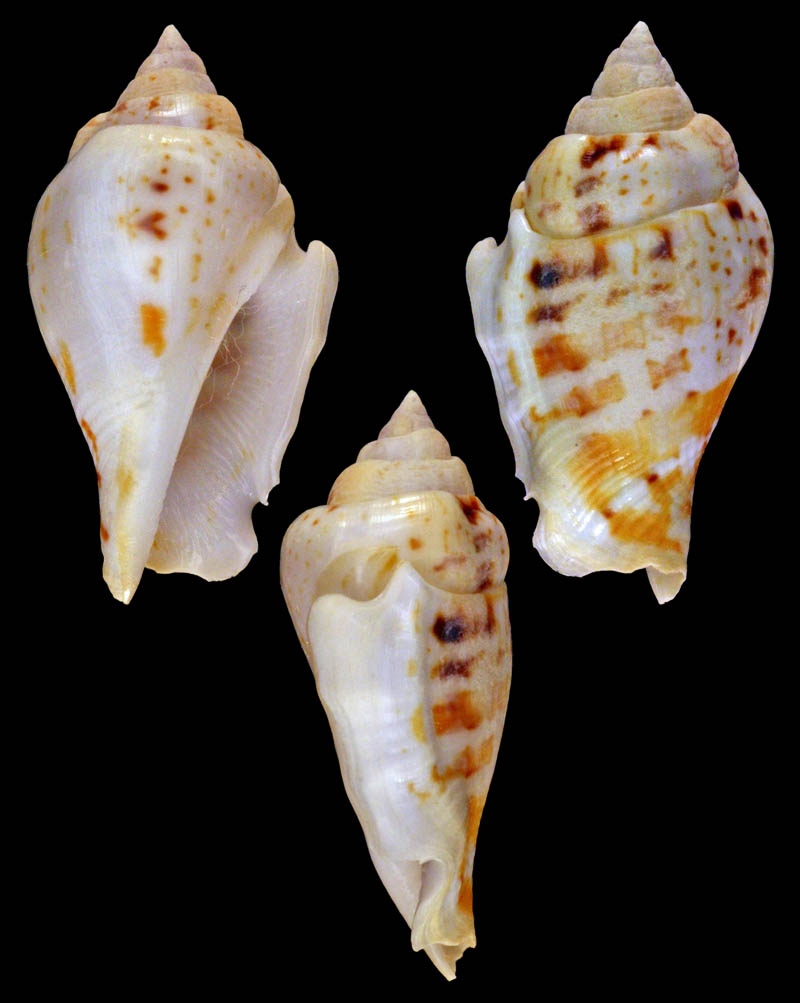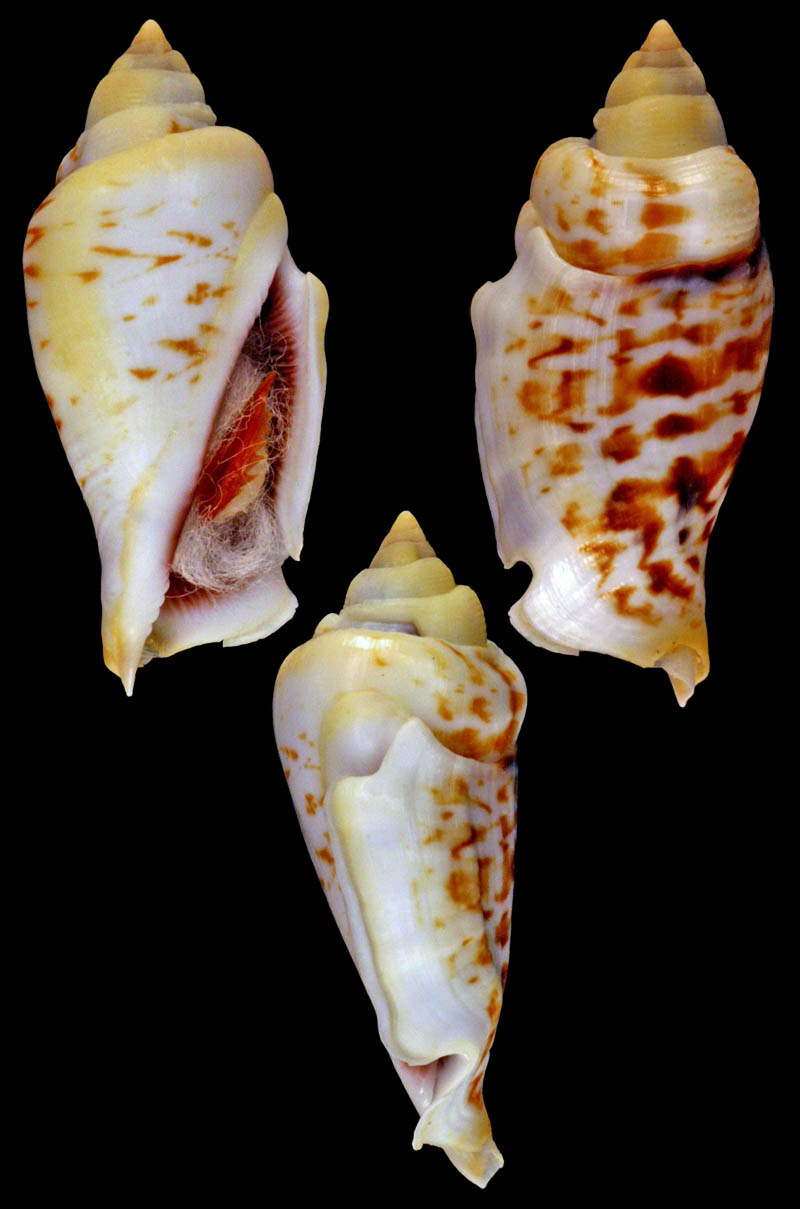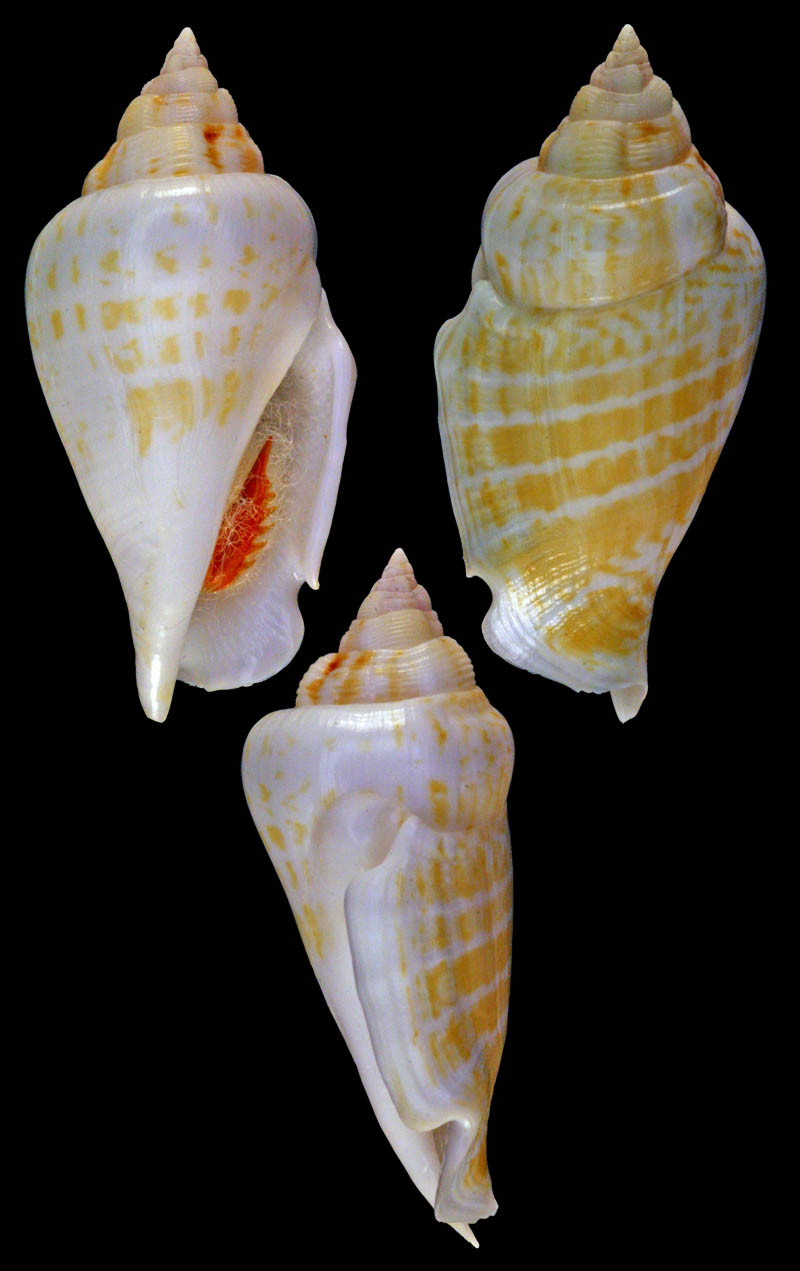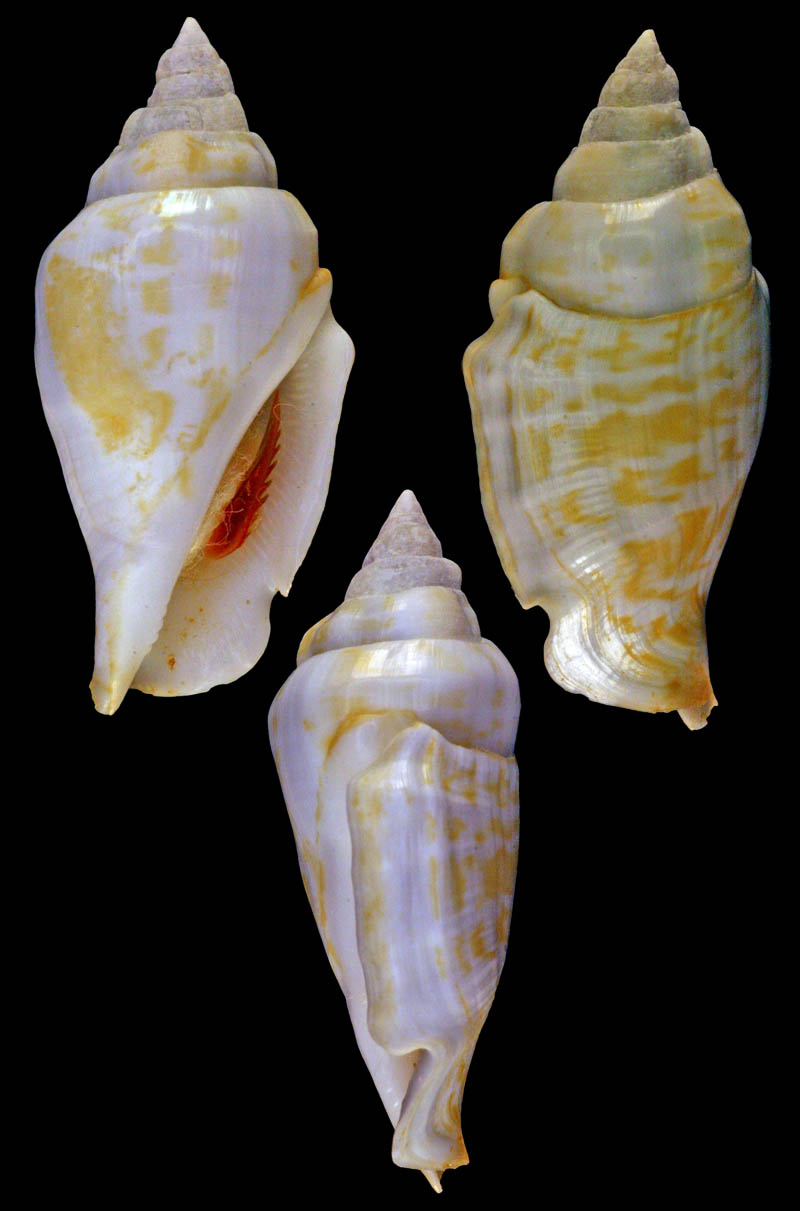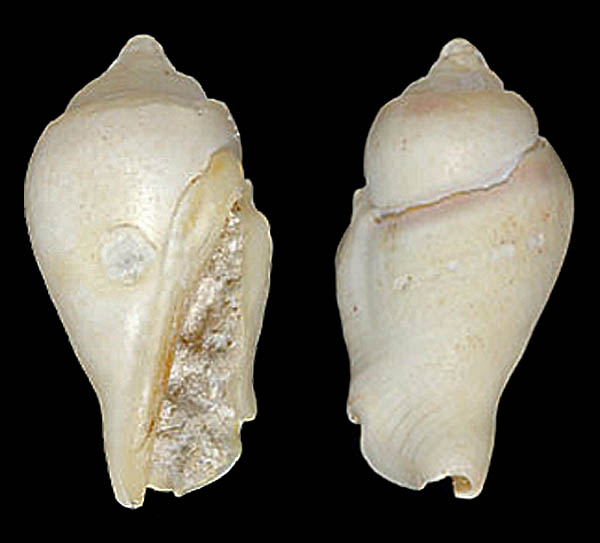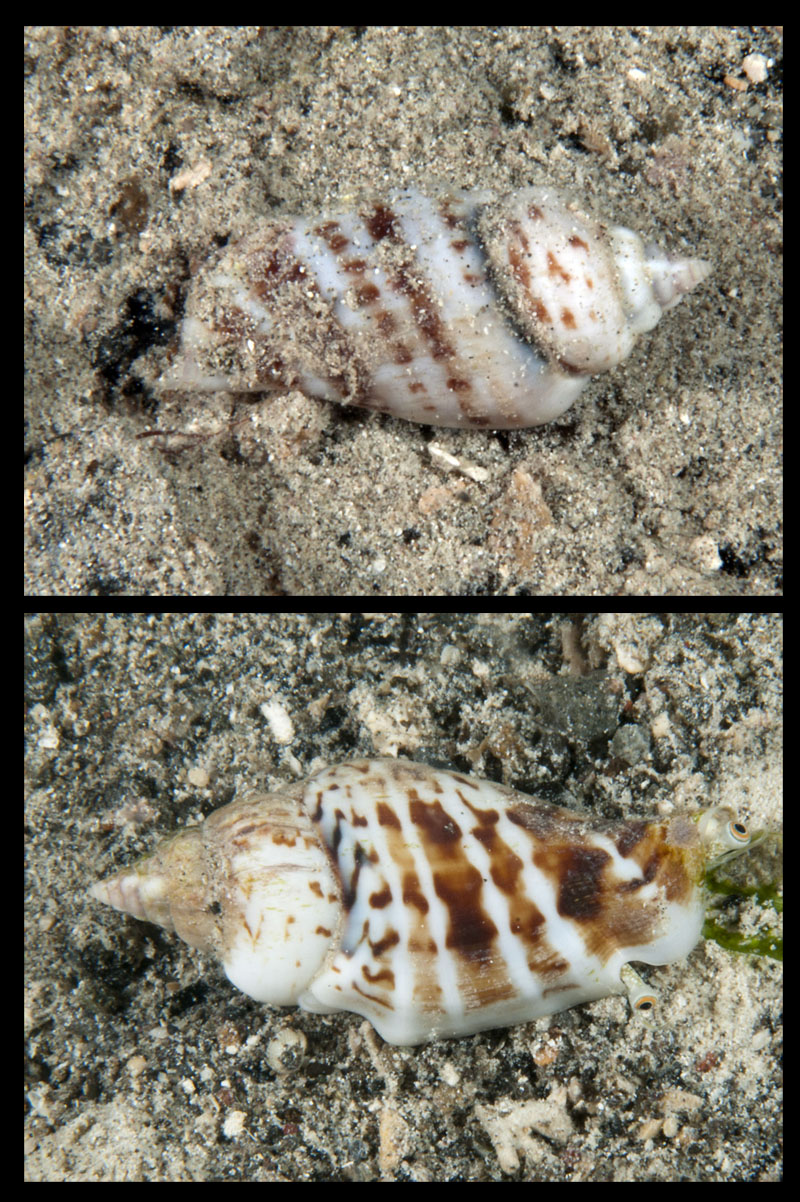|
edit SideBar
|
Species / Gibberulus Gibbosus
Stromboidea
Original Description of Lambis Gibbosa by Röding, 1798, p. 62:
- "L. Gibbosa. Die höckrigte Flügel Schn. Gmel. Strombus gibberulus. sp. 17. Martini 3. t. 27.[sic, pl. 77!] f. 794."
Locus typicus: "To our knowledge no type exists. The species was based upon figure 794 in vol. 3 of Martini and Chemnitz, Conchyl.-Cab., Nurnberg, 1777 which had no locality. We hereby Designate Cebu City, Cebu Island, Central Visayas Region, Philippines, as the type localiy." (Abbott, 1960, p. 144)
Die bucklichte Kanarienschnecke Martini, 1777, pl. 77, fig. 794
History and Synonymy
Gibberulus gibbosus (Röding, 1798: 62) (Lambis)
- Syn.: Strombus gibberulus Linné Auct., among others Lamarck, 1822: 205; Sowerby 2nd, 1842: pl. 6 figs 24-26
- Syn.: Strombus succinctus Lamarck, 1816: .., pl. 408 figs 3a, 3b [Lamarck states this image represents a juvenile in 1822 (as Strombus gibberulus), but the 1816 image has a completely formed strombid notch.
1766
Canarium var 1 in Rumphius, 1766, pl. XXXVII, fig. V
1949
Abbott, 1949, p. 58:
- "In 1945, I collected several hundred specimens of small Strombus at the north end of Agana Bay, Guam Island, Marianas. The shallow, protected waters and the sand-mud bottom of this area are ideal for large, mixed colonies of S. gibberulus Linne [...]. In the process of cleaning the shells, females were separated from males. The latter are easily recognized by the long, slender penis which is attached to the right side of the body. Additional observations were made on a colony of Strombus gibberulus Linne collected June 5, 1946 by Dr. J. P. E. Morrison on the southwest side of Igurin Island, Eniwetok Atoll, Marshall Islands. Since these specimens were preserved in alcohol, it was possible to separate the sexes. The shell length of the males and females in each sample population was measured, and the results found in the two Guam colonies have been presented in the graphs shown below.[...] Figure A, which is a graph of the males and females of Strombus gibberulus Linne from Guam, shows that sexual dimorphism is present to a very small degree. The Eniwetok colony of 297 specimens of S. gibberulus, which is not figured here, showed growth curves very similar to those shown in the Guam specimens (fig. A). The differences between the sizes of the two sexes were more pronounced, and suggest that the degree of sexual dimorphism, as expressed by size, may differ from one locality to another. Ecological studies would be necessary to determine if these geographical differences are genetically founded or are products of the environment. It was noticed that in each of the three colonies there are fewer males than females. The percentage of males present in each sampling were 40% (gibberulus, Guam), 437c (gibberulus, Eniwetok) [...]. There are two general color phases in Strombus gibberulus: (1) the light phase, in which the aperture is white or rarely with yellowish markings and in which the markings on the outside of the shell are light yellow or nearly absent. (2) the dark phase, in which the columella and interior of the aperture are variously splotched with deep or light purple and in which the markings on the outer shell are light to dark brown. No correlation was found between sex and color phase. At Eniwetok, 38 males and 51 females were dark, 92 males and 119 females light. At Guam, 36 males and 30 females were dark, 76 males and 136 females light. In both these colonies there were roughly twice as many light as dark phase individuals. At Tutuila Island, Samoa, however, a colony possessed, in contrast, only 280 light phase to 452 dark phase individuals. These color phases are probably genetically controlled, since individuals of each type are found in the same immediate habitat, and since individuals do not change from one phase to the other during their life span. Whether or not the predominance of one phase over the other follows a geographical gradient can be determined only when large series from many localities are available for study."
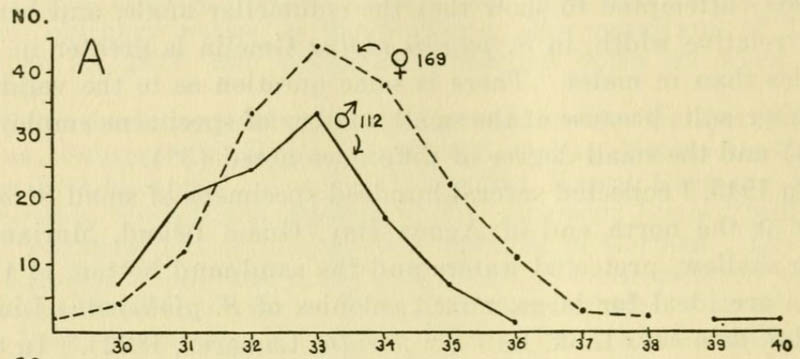 Fig. 1. Growth curves based on total shell length of male and female Strombus from Agana Bay, Guam Island. A: S. gibberulus Linne
1972
Ladd, 1972, p. 62:
- "As noted by Abbott (1960), this subspecies is smaller than typical Strombus gibberulus, and the spiral threads over the varix on the last whorl are weak or absent. On a figured specimen from drill hole A-1 on Eniwetok (pl. 19, fig. 9; pl. 20, fig. 1) the spirals are absent, but on the other Eniwetok fossil specimens the spirals are weakly developed. On a specimen from Bikini drill hole 2, depth 180-185 feet, the spiral threads are developed on the varix opposite the aperture as well as on the outer lip near the aperture. The spiral threads are weakly developed on the figured specimen from Guam (pl. 20, figs. 2, 3) but are more strongly developed on other fossil specimens from that island. Measurements of the figured specimen from Eniwetok, USNM 648474: length 28.8 mm, diameter 15.1 mm. The figured specimen from Guam, USNM 648476, measures: length 49.8 mm, diameter 25.9 mm."
- "Occurrence. - A single specimen from the Mariana Limestone (USGS loc. 17893) and two from the Tanapag Limestone (USGS loc. 17897) of Saipan; age of all three specimens, Pleistocene. Numerous specimens from the Agana Argillaceous Member of the Mariana Limestone of Guam (USGS locs. 20526, 20730, 21377, 21378): age, Pliocene or Pleistocene. One specimen from the Alifan Limestone (USGS loc. 20723): age, Tertiary g or h. Four specimens from Eniwetok drill holes (A-1, depth 136-138 ft; Mu-4, depth 40-41 ft; F-7-C, depth 16-19 ft); all occurrences probably Holocene. Three specimens from core of drill hole 2 on Bikini (Core 2-11-1), depth 180 feet; age probably Holocene. Abbott (1960, p. 142) has mapped known occurrences of the living specimens. They inhabit Indonesia and most of the western Pacific islands except Hawaii, the Line Islands, and the Marquesas. Fossil shells thought to be Pleistocene were dredged from Honolulu Harbor (Ostergaard, 1928, p. 27) and were collected from an elevated terrace on Lanai (USNM 496370) by Harold T. Stearns, of the U.S. Geological Survey. Fossil specimens have also been reported from the Pliocene and Quaternary of Indonesia and the New Hebrides."
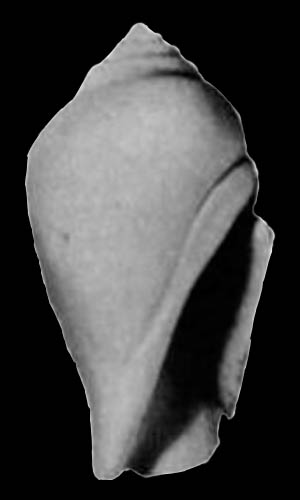 Strombus (Gibberulus) gibberulus gibbosus in Ladd, 1972, pl. 19, fig. 9
Strombus (Gibberulus) gibberulus gibbosus in Ladd, 1972, pl. 20, fig. 1, 2, 3
1988
Moore & Moore, p. 101 from the abstract:
- "Approximately 105,000 yr ago (based on uranium-series dating), waves in a giant wave train swept up to an elevation of about 375 m on the island of Lanai. The waves deposited the Hulopoe Gravel, which near the present shoreline consists of basalt boulders, coral fragments, and calcareous beachrock slabs, and near the upper limit of the deposit consists of sand and shell fragments."
Moore & Moore, 1988, p. 105 reported Strombus (Gibberulus) gibberulus gibbosus from U.S.G.S. Cenozoic locality M8841, gulch at the head of Kaphaa Bay, 200 m inland from shore, 22 m elevation, 20°44'7"N, 156°54'1"W, Lanai, Hawaii
1999
Yokogawa, 1999, p. 363:
- "Morphological and genetic features in two forms (white form and purple form) of gibbose conch, Gibberulus gibberulus gibbosus, were examined. Morphological characters of the two forms showed no significant differences except the shell coloration. Isozymes detected by horizontal starch-gel electrophoresis were used as genetic markers of 22 loci presumed. There were no significant differences between the two forms in the genetic variability and allelic frequencies at any of the loci examined. The genetic distance (D value) between the two forms, calculated from isozymic allele frequencies was 0.0019, being below the inter-subpopulational level. The morphological and genetic results suggested that the white form and the purple form compose the unique Mendelian population, they represented an intra-specific variation."
- "Gibbose conch, Gibberulus gibberulus gibbosus (Röding) (Gastropoda: Strombiidae[sic] ), is a common tropical shell species in the Pacific tidal waters. It is utilized as food in some tropical region where it abundantly occurs. In this species, it is known that there are two distinct forms; aperture with white coloration [...] and that with purple coloration [...]. In addition, the purple form has a more contrasty dappled pattern on the shell surface than the white form."
- [locality] "...sandy bank located between Fukapanari (Sotobanare) Island and Uchipanari (Uchibanare) Island, which are adjacent to Iriomote Island, Taketomi-cho, Okinawa Prefecture, Japan, on September 13, 1997 by snorkeling."
- "The specimens comprised 36 individuals of the white form and 8 individuals of the purple form. Sizes (shell height) of the specimens were 32.8-54.6 mm (average 41.8 mm) in the white form and 34.7-46.2 mm (average 41.0 mm) in the purple form."
Reports
Jeanette & Scott Johnson about Gibberulus gibbosus from Kwajalein Atoll:
- "Gibberulus gibbosus is abundant in many lagoon sand flats in the Marshalls. In some areas in seems to be the most common mollusk present. They are seen only rarely on the seaward reef. They range from about 1 to at least 20m depth, and probably often extend deeper as well. The largest we know of was about 49mm long. Sometimes the shell is pure white, but it often is variably marked with brown, and may have a purple or white aperture. Occasionally we see piles of shells that have been recently cleaned out by some predator without damaging the shell. We suspect some nocturnally active octopus is pulling the animals out of the shells and devouring them in large numbers."
"The interior of the aperture can be purple or white."
"They can frequently be seen gathering on sand flats to breed, leaving their eggs in mixtures of sand and mucus on the top of the sand."
- top: "We found this large group marching (well, hopping) down a sandy lagoon slope all in the same direction on 5 October 2009. You can see the crowded front line toward the upper part of the first photo below, with their tracks in the sand trailing toward the lower left. The front line extended a good 10 to 12m and there must have been thousands of the mollusks, all apparently of the same mind(?) about where to go."
- bottom: "Another marching horde observed on 22 July 2012."
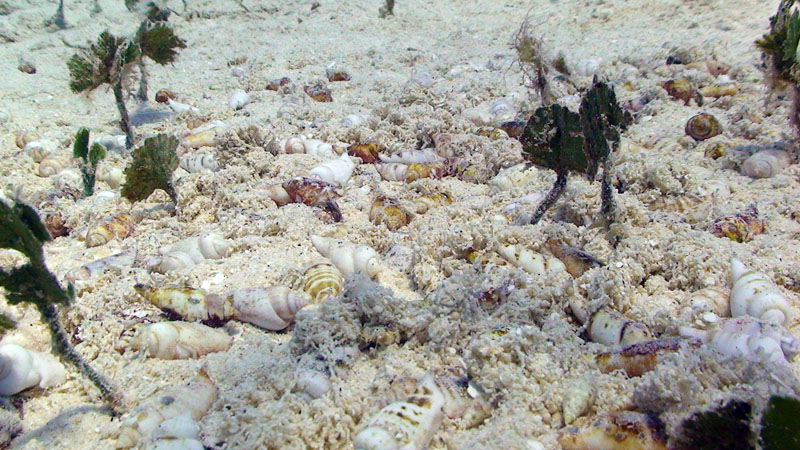 - Photo of a cluster of G. gibbosus mixed in with their spawn, which is covering the sand between the shells. (1/2013)
- The real distinct herder is Gibberulus gibbosus, where many hundreds come together and move around as a group. Sometimes these groups can be seen to have all spawned at once, leaving piles of sand-infused egg masses all over the surface of the sand. I've watched these groups for a while, and there seem to be no specific pairing up. Particularly when the herd is moving, it seems a chaotic mass where the entire group is hopping along with no regard for pairing up. Even when a group like this is in or moving through an area, there seem to be plenty of individual specimens around that are not part of the group and seem to have no interest in joining as the group passes."
All Photos of Kwajalein Atoll-specimens courtesy Scott & Jeanette Johnson, Kwajalein Atoll
Paul Merrill about Gibberulus gibbosus from Guam:
- Observation: There are three different color lips in Gibberulus gibbosus, (of 141 specimens) the common specimen has a white lip (84 specimens) with the purple lip next (48 specimens) and then the orange lip (9 specimens). There are several color patterns, most are the dark patterns of the purple lip shells. If the shell has a white or orange lip, the patterns are light colored.
Gibberulus gibbosus from Guam Island
Bob Abela on Gibberulus gibbosus from Guam
Gibberulus gibbosus (Roeding, 1798); ~40 ft.; on open sandy bottom; Agat Bay, Guam; 17 May 08; photo Bob Abela
Specimens from private collections
Gibberulus gibbosus (Röding, 1798); Apra Harbor, Guam Island, Mariana Islands, Micronesia, USA, North Pacific Ocean; 5-15 ft in silt & rubble on a reef at night; 1.r: 52,1 mm, 2.r: 36,8 mm, 3.r: 43 mm, 4.r: 47 mm; 1984; Coll. Paul Merrill
Gibberulus gibbosus (Röding, 1798); Apra Harbor, Guam Island, Mariana Islands, Micronesia, USA, North Pacific Ocean; 5-15 ft in silt & rubble on a reef at night; 1.r: 50,1 mm, 2.r: 44,8 mm, 3.r: 39 mm, 4.r: 47,3 mm, 5.r: 37,9 mm; 1984; Coll. Paul Merrill
Gibberulus gibbosus (Röding, 1798); Apra Harbor, Guam Island, Mariana Islands, Micronesia, USA, North Pacific Ocean; 5-15 ft in silt & rubble on a reef at night; 1.r: 46 mm, 2.r: 27,8 mm, 3. r: 31,2 mm, 4. r: 32 mm; 1984; Coll. Paul Merrill
Gibberulus gibbosus (Röding, 1798); Apra Harbor, Guam Island, Mariana Islands, Micronesia, USA, North Pacific Ocean; 5-15 ft in silt & rubble on a reef at night; 1.r: 39,5 mm, 2.r: 40 mm, 3. r: 41,7 mm, 4. r: 42,1 mm; 1984; Coll. Paul Merrill
Gibberulus gibbosus (Röding, 1798); Philippines Islands; Coll. Guido Poppe
- l: Balut Island, Sarangani Islands group, Davao Occidental Province, Davao Region; taken with tangle nets at about 150 m; 2006; 56,2 mm; no. 357073
- m: Balut Island, Sarangani Islands group, Davao Occidental Province, Davao Region; taken with tangle nets at about 150 m; 2006; 50,1 mm; no. 357074
- r: Samal, Southern Mindanao Island, Davao del Norte Province, Davao Region; taken with tangle nets about 150 m; 2006; 38,1 mm; no. 368061
Gibberulus gibbosus (Röding, 1798); Gab Gab Beach, Apra Harbor, Guam Island, Mariana Islands, Micronesia, USA, North Pacific Ocean; in coarse sand & gravel at the shores edge, reef Walking; 4/1978; 44.9 mm; Coll. Richard Salisbury
Gibberulus gibbosus (Röding, 1798); Gab Gab Beach, Apra Harbor, Guam Island, Mariana Islands, Micronesia, USA, North Pacific Ocean; in coarse sand & gravel at the shores edge, reef Walking; 4/1978; 44.8 mm; Coll. Richard Salisbury
Gibberulus gibbosus (Röding, 1798); Gab Gab Beach, Apra Harbor, Guam Island, Mariana Islands, Micronesia, USA, North Pacific Ocean; in coarse sand & gravel at the shores edge, reef Walking; 4/1978; 43,7 mm; Coll. Richard Salisbury
Gibberulus gibbosus (Röding, 1798); Gab Gab Beach, Apra Harbor, Guam Island, Mariana Islands, Micronesia, USA, North Pacific Ocean; in coarse sand & gravel at the shores edge, reef Walking; 4/1978; 34,8 mm; Coll. Richard Salisbury
Gibberulus gibbosus (Röding, 1798); Gab Gab Beach, Apra Harbor, Guam Island, Mariana Islands, Micronesia, USA, North Pacific Ocean; in coarse sand & gravel at the shores edge, reef Walking; 4/1978; 35,7 mm; Coll. Richard Salisbury
Gibberulus gibbosus (Röding, 1798); Gab Gab Beach, Apra Harbor, Guam Island, Mariana Islands, Micronesia, USA, North Pacific Ocean; in coarse sand & gravel at the shores edge, reef Walking; 4/1978; 44,7 mm; Coll. Richard Salisbury
Gibberulus gibbosus (Röding, 1798); Gab Gab Beach, Apra Harbor, Guam Island, Mariana Islands, Micronesia, USA, North Pacific Ocean; in coarse sand & gravel at the shores edge, reef Walking; 4/1978; 43,9 mm; Coll. Richard Salisbury
Gibberulus gibbosus (Röding, 1798); fossil; Sand Island, Hawaii, USA; 32 mm; Coll. Keoki Stender
Living specimens
Gibberulus gibbosus (Röding, 1798); Papua New Guinea; Photo Andrey Ryanskiy
References
- R.T. Abbott, 1949. Sexual Dimorphism in Indo-Pacific Strombus, The Nautilus, vol. 63, p. 58-61
- Abbott, 1960
- Arakawa, Y. (1986): Gibbose conch Gibberulus gibberulus gibbosus (Röding), in "The Great Animal Illustrated Encyclopedia, Mollusca" (ed. by T. Okutani), Sekaibunkasha, Tokyo, pp. 94 (in Japanese).
- G.W. Moore & J.G. Moore, 1988. Large-scale bedforms in boulder gravel produced by giant waves, in H.E: Clifton (Ed.). Sedimentologic consequences of convulsive geologic events. Geological Society of America, Special Paper 229, p. 101-110.
- Tsuchida, E. & S. Shimura (1996): Some commercial mollusks collected at Suva market, Fiji (2). Chiribotan, 27(1), 16-20 (in Japanese).
- Ueno, S. (1994): Why does gibbouse conch, which inhabits sandy beach of Iriomote Island gather? Mar. Sci. Mus. Tokai Univ., 24(5), 2-3, 1 pl. (in Japanese).
- K. Yokogawa, 1999. Morphological and Genetic Characteristics in Two Forms of Gibbose Conch, Gibberulus gibberulus gibbosus, SUISANZOSHOKU 47(3), 363-368 (1999), Fulltext
|

